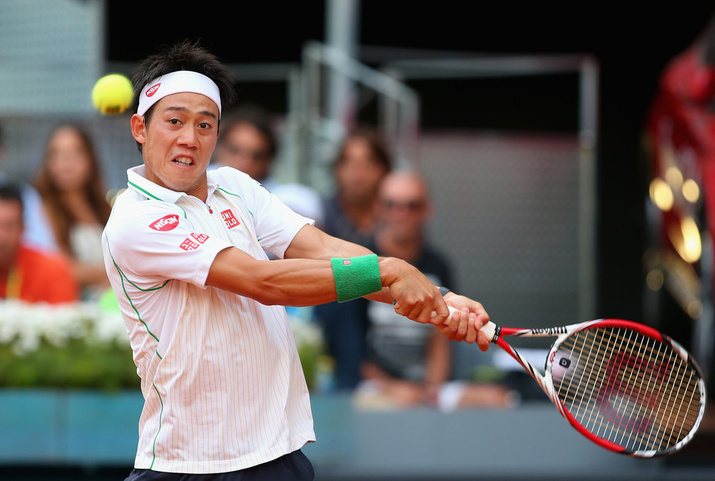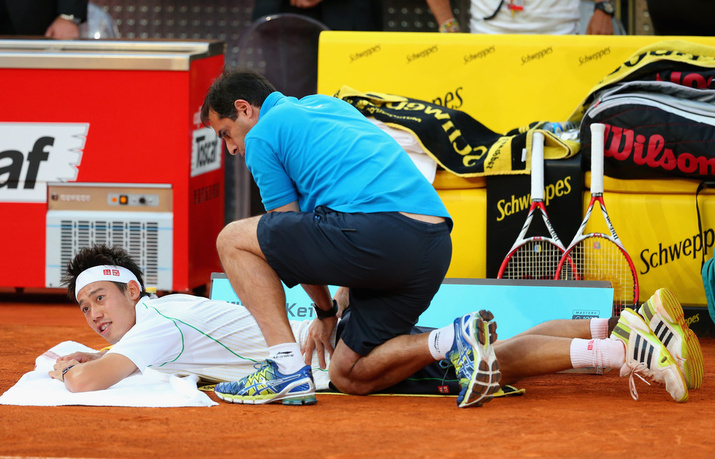Don't miss any stories → Follow Tennis View
FollowWhy Injury Could Derail Kei Nishikori's Talent
Tennis is a sport that at times can be unpredictably kind and at other times terribly unforgiving.
It is one of the only sports where the mistakes of your opponent work in your favor. Technically, any player could win any given match without hitting a single winner. In a sport such as basketball, by contrast, the other team missing shot after shot doesn’t benefit you unless your team scores.
But, as any professional tennis player would tell you, the occasions of cruelty significantly outnumber the instances of good fortune. One of the main reasons for this is because tennis has no shot clock. Nothing is set in stone until the last point is finished. At the moment, no tennis player in the world knows this better than Kei Nishikori.

On Sunday evening in Madrid, Nishikori was seemingly on the verge of winning the biggest title of his entire career. Up 6-2 4-2, the finish line was staring Japan’s highest-ranked player right in the face. His sensational level of play needed to withstand the resistance of Rafael Nadal for just two more games. Eight more points, and a Masters Series 1000 crown would be his. Unfortunately, Nishikori’s lower back had different ideas.
After Nadal held serve to close within 3-4 in the second set, it was blatantly obvious that Nishikori’s level of play was acceding to his pain. Unable to really move or obtain any modicum of leverage, Nishikori failed to win another game in the match before retiring down 3-0 in the third set. The end of this match was disappointing, but it certainly wasn’t inconceivable, nor was it anything we haven’t seen before.
Nishikori has retired from a total of 16 matches throughout his career and has retired from at least one match every year since 2006. Whether it be his groin, his knee, his back, etc., Nishikori’s brittleness has continually created unnecessary interferences throughout his career. The Japanese star is often grouped with the rising young guns primed to take over the upper echelons of the game in years to come. But he is already 24, and, although the matches themselves don’t have a clock, careers do.
Roger Federer turned 24 in 2005. Rafael Nadal turned 24 in 2010. Novak Djokovic turned 24 in 2011. One could reasonably argue that all three of these players arrived at their peak at this age. Nishikori turned 24 at the end of 2013, and his on-court performance in 2014 suggests that he may be entering his prime at 24 as well.
Having earned a well-deserved spot in the ATP top 10 for the first time in his career, Nishikori must do everything in his power to synchronize his highest level of play with his highest level of health. It would be a shame to see the talent and drive of this player become permanently compromised due to his unreliable body.

The often-injured veteran Tommy Haas knows all too well what Nishikori is going through. Considering that Nishikori and Haas have previously trained together at Nick Bolletieri’s IMG Academy, this player who has exited at least two matches in 10 different seasons via retirement or walkover might offer Nishikori some insight on how to best deal with his fragility.
Nishikori is one of the brightest and boldest rising stars in tennis. The vast improvements that he has made in his game have created a situation where his ceiling continues to elevate. However, his physical condition has the potential of stopping this ceiling right in its tracks.
But if he can start to reverse the trend of incurring serious injuries and remain healthy, there’s really no telling how far Kei Nishikori can go.










